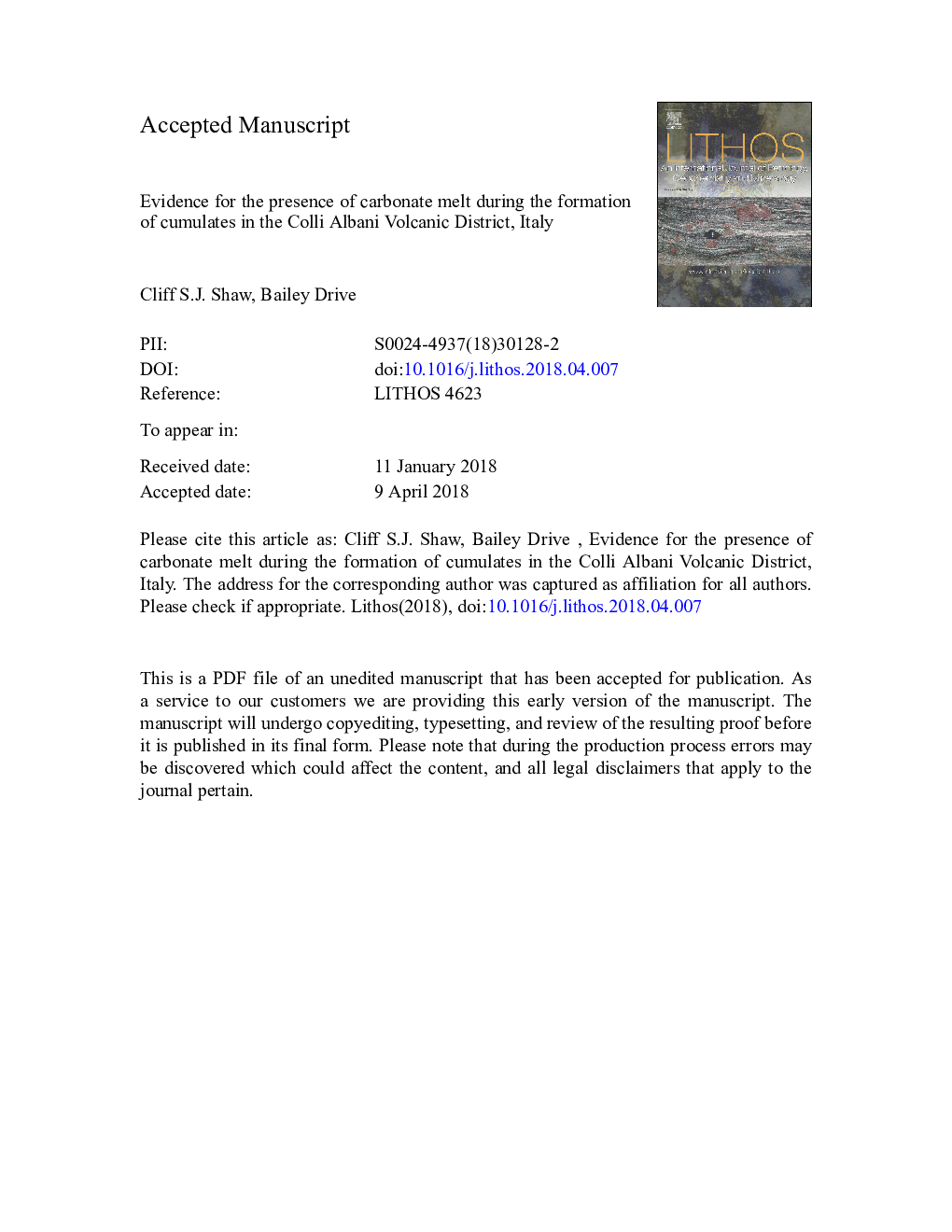| Article ID | Journal | Published Year | Pages | File Type |
|---|---|---|---|---|
| 8911607 | Lithos | 2018 | 57 Pages |
Abstract
Fergusite and syenite xenoliths and mafic lapilli from two locations in the Villa Senni ignimbrite of the Colli Albani Volcanic District show evidence for fractionation of a silicate magma that led to exsolution of an immiscible carbonate melt. The fergusite xenoliths are divided into two groups on the basis of their clinopyroxene compositions. Group 1 clinopyroxene records the crystallisation of a silicate melt and enrichment of the melt in Al, Ti and Mn and depletion in Si as well as enrichment in incompatible trace elements. The second group of clinopyroxene compositions (group 2) comes mainly from Ba-F-phlogopite- and Ti-andradite-bearing fergusites. They have significantly higher Si and lower Al and Ti and, like the coexisting phlogopite and garnet are strongly enriched in Mn. The minerals in the fergusites containing group 2 clinopyroxene are enriched in Ba, Sr, Cs, V and Li all of which are expected to partition strongly into a carbonate melt phase relative to the coexisting silicate melt. The compositional data suggest that the group 1 fergusites record sidewall crystallisation of CO2-rich silicate melt and that once the melt reached a critical degree of fractionation, carbonate melt exsolved. The group 2 fergusites record continued crystallisation in this heterogeneous silicate - carbonate melt system. Composite xenoliths of fergusite and thermometamorphic skarn record contact times of hundreds to a few thousand years indicating that fractionation and assimilation was relatively rapid.
Keywords
Related Topics
Physical Sciences and Engineering
Earth and Planetary Sciences
Geochemistry and Petrology
Authors
Cliff S.J. Shaw,
